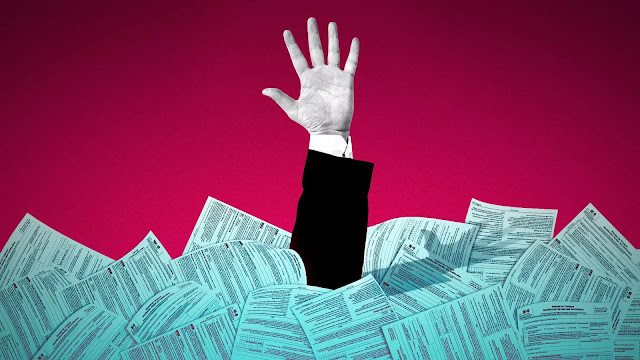As the Federal Reserve has lifted its key interest rate several times this year, Americans have seen the effects on both sides of the household ledger: Savers benefit from higher yields, but borrowers pay more.
Here’s how it works:
Credit Cards
Credit card rates are closely linked to the Fed’s actions, so consumers with revolving debt can expect to see those rates rise, usually within one or two billing cycles. The average credit card rate was 19.4 percent as of Dec. 7, according to Bankrate.com, up from around 16 percent in March, when the Fed began its series of rate increases.
“With the frequency of Federal Reserve rate hikes this year, it will be a drumbeat of higher rates for cardholders every couple of statement cycles,” said Greg McBride, the chief financial analyst at Bankrate.com.
Car Loans
Car loans are also expected to climb, but those increases continue to be overshadowed by the rising cost of buying a vehicle and the price you pay for filling it with gas. Car loans tend to track the five-year Treasury note, which is influenced by the Fed’s key rate — but that’s not the only factor that determines how much you’ll pay.
A borrower’s credit history, the type of vehicle, loan term, and down payment are all baked into that rate calculation. The average interest rate on new-car loans was 5.7 percent in the third quarter, according to Edmunds, up from 5 percent in the same period last year.
Student Loans
Whether the rate increase will affect your student loan payments depends on the type of loan you have.
The rate for current federal student loan borrowers — many of whom will see up to $20,000 in loans canceled under a Department of Education program, which also extended a pause on payments until at least January — aren’t affected because those loans carry a fixed rate set by the government.
But new batches of federal loans are priced each July, based on the 10-year Treasury bond auction in May. Rates on those loans have already jumped: Borrowers with federal undergraduate loans disbursed after July 1 (and before July 1, 2023) will pay 4.99 percent, up from 3.73 percent for loans disbursed the year-earlier period.
Borrowers of private student loans should also expect to pay more: Both fixed- and variable-rate loans are linked to benchmarks that track the federal funds rate. Those increases usually show up within a month.
Mortgages
Rates on 30-year fixed mortgages don’t move in tandem with the Fed’s benchmark rate, but instead generally track the yield on 10-year Treasury bonds, which are influenced by a variety of factors, including expectations around inflation, the Fed’s actions and how investors react to all of it.
After climbing above 7 percent in November, for the first time since 2002, mortgage rates had fallen to 6.33 percent in the week through Dec. 8, according to Freddie Mac. The average rate for an identical loan was 3.1 percent the same week in 2021.
Other home loans are more closely tethered to the Fed’s move. Home equity lines of credit and adjustable-rate mortgages — which each carry variable interest rates — generally rise within two billing cycles after a change in the Fed’s rates.
Savings Vehicles
Savers seeking a better return on their money will have an easier time — yields have been rising, though they’re still pretty meager.
An increase in the Fed’s key rate often means banks will pay more interest on their deposits, though it doesn’t always happen right away. They tend to raise their rates when they want to bring more money in — many banks already had plenty of deposits, but that may be changing at some institutions.
Rates on certificates of deposit, which tend to track similarly dated Treasury securities, have been ticking higher. The average one-year C.D. at online banks was 4.1 percent at the start of December, up from 0.5 percent at the beginning of the year, according to DepositAccounts.com.
Officials at the Federal Reserve raised interest rates by half a percentage point on Wednesday, setting their policy rate at 4.25 to 4.5 percent, the highest it has been since 2007. Here’s what else to know about the central bank's actions:
The Fed’s move was widely expected by economists and raised rates at a slower pace from the previous four meetings when rates increased in three-quarter-point increments.
The central bank emphasized that it would do more to restrain the economy than previously expected. Rates are expected to rise to 5.1 percent next year, officials projected, up from 4.6 percent when they last issued forecasts, in September.
Officials also projected that growth would fall sharply and that unemployment would rise notably, nudging the economy to the brink of recession. The unemployment rate is predicted to remain elevated in 2024 and 2025, a clear sign of how the Fed’s efforts to control inflation will take a toll on workers and the broader economy.
Stocks fell after the rating announcement, as investors assessed the forecasts for rates that remain higher for longer.
LISTEN NOW: The Fed raises interest rates by half a percentage point — we discuss. Listen and follow the @PowerLunch podcast here or on your favorite podcast platform: https://t.co/WV081BMFte pic.twitter.com/yJDkylPFQd
— CNBC (@CNBC) December 14, 2022
DOT PLOT: The Fed's latest decision to raise rates by 50 basis points follows four consecutive 75 basis-point hikes.
— Bloomberg (@business) December 14, 2022
The vote to raise rates was unanimous https://t.co/7GZ0Fp1VXx pic.twitter.com/Y4N0Rvt2vQ
BREAKING: Fed Chair Jerome Powell addresses the unanimous 4.25%-4.5% target rate decision https://t.co/4rvOLXxfkI pic.twitter.com/r8TGVSjw1e
— Bloomberg TV (@BloombergTV) December 14, 2022
“The inflation data received so far for October and November show a welcome reduction in the monthly pace of price increases,” Fed Chair Jerome Powell says. “But, it will take substantially more evidence to give confidence that inflation is on a sustained downward path.” pic.twitter.com/Ft9tOwmlTU
— TheStreet (@TheStreet) December 14, 2022


